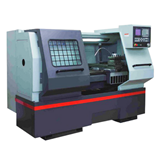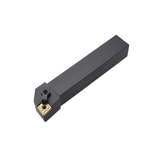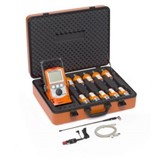CRC Association
The ‘noise’ is the vast amount of unprocessed data that accumulates whenever something is monitored with a sensing device – be it a security camera, a radar network, a water supply, a cancer-detection technology or a mineral process.
The profit lies in coming up with technologies that can make sense of the data, and see patterns in it that enable people – or machines – to take appropriate action, says Professor Matthew Cuthbertson, CEO of the CRC for Sensor Signal and Information Processing (CSSIP).
Although CSSIP sun-sets this year after 14 years in action, its legacy of profitable small to medium enterprises and technology products lives on.
A recent study by Allen Consulting on the economic impact of CRC research found that CSSIP had earned $3 million from sales to Australia’s defence sector between 2002-04 and $12.5 million in sales to the mining sector in 2004-05.
Because of its work with the defence sector, Australia’s eyes and ears are a lot sharper. This has included:
- enhancing the performance of Australia’s over-the-horizon radar in picking up incursions into our 200-km offshore zone
- new prototype software for real-time air threat assessment, to assist critical command decisions
- advanced protocols for target tracking and data fusion using multiple types of sensors
- novel ways to generate 3D images from radar data
- advanced algorithms for ship-classification using standard nautical radar
But CSSIP has also developed potentially lifesaving techniques to detect unstable slopes in open-cut mines, new ways to detect pre-cancerous cells from microscope images, better ways to deliver water to farmers and smart networking of security cameras so they can detect criminal or terrorist activity and track the suspects.
Among the CRC’s most notable results is a spinoff called GroundProbe which is marketing slope-stability radar to open-cut mines worldwide. This startup turned over $12.5 million in its second year and could achieve $20 million in 2005/06. Its technology detects if a sloping piece of ground is becoming unstable enough to collapse, and more than 30 have been deployed worldwide so far.
“There are also many other potential applications for this technology beyond the mining sector, in countries which are prone to landslips or in engineering situations like tunnelling where a surface structure may be undermined.”
However Prof. Cuthbertson considers that one of CSSIP’s largest payoffs is likely to come from its work in developing intelligent networks for security cameras. There is worldwide interest in the technology, which has been trialed on two of Sydney’s most famous landmarks – the Harbour and ANZAC bridges – and on the Adelaide University campus.
“Instead of have hundreds of cameras reporting to hundreds of monitors watched by a handful of people, there is potential to have the entire network ‘thinking’ as one – looking for suspicious behaviour or objects, tracking potential suspects and alerting security people to anything untoward. It sounds simple but the challenges involved are far from trivial,” he says.






